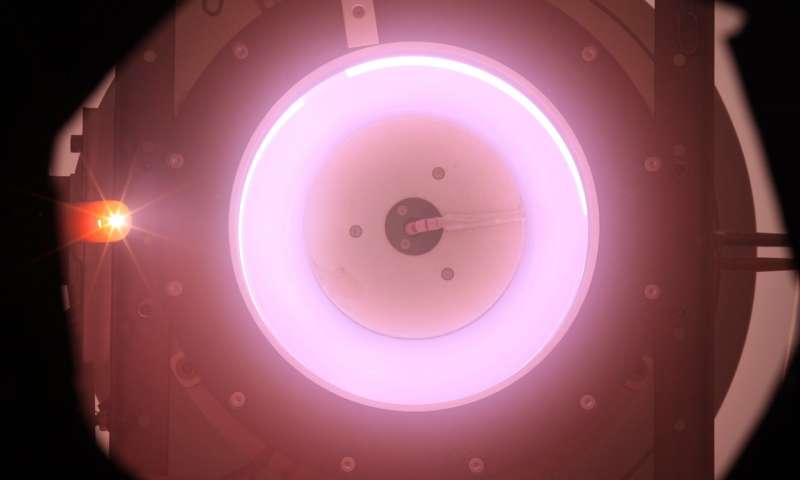A one-of-a-kind electric thruster developed by the European Space Agency collects air molecules and turns them into propellant. The novel propulsion system is meant to keep satellites orbiting at their lowest altitude yet without the need to refuel. A prototype recently passed a critical test, proving the technology is viable.

ESA’s GOCE satellites flew as low as 250 km for more than five years thanks to a similar electric thruster which fired to compensate for air drag. But once it depleted the 40 kg of xenon propellant it carried, the satellite had to be discontinued.
To keep similar satellites afloat, organizations such as NASA and The China National Space Administration have devised all sorts of in-space refueling solutions, akin to how some airplanes refuel mid-air today. But the electric thruster proposed by ESA is far more elegant. There are no valves or complex parts, and the propellant is literally air charged by coils and electrodes.

The concept was developed and tested by Italian aerospace company Sitael, which tested a prototype in a vacuum environment that mimicked conditions found 200 km above the Earth’s surface. The most challenging part was designing an intake that compresses the collected air molecules instead of having them bounce off randomly. The solution that Sitael engineers found, in collaboration with QuinteScience from Poland, was a dual-stage thruster that electrically charges the incoming air so it provides thrust once it’s ejected. The thruster would eject the charged air molecules at a typical speed of 7.8 km/s.
In the first stage of the test, the dual-stage thruster operated on xenon inside a vacuum chamber. Engineers then gradually replaced the xenon with a mixture of high-speed nitrogen and oxygen, mimicking the atmosphere at 200 km altitude.
“When the xenon-based blue colour of the engine plume changed to purple, we knew we’d succeeded,” said ESA engineer Louis Walpot in a statement. “This result means air-breathing electric propulsion is no longer simply a theory but a tangible, working concept, ready to be developed to serve one day as the basis of a new class of missions.”
Some satellites can stay in orbit for decades, maybe centuries, but only because they’re so high above Earth’s surface that drag is almost nonexistent. The advantage of having a low-orbiting observational satellite is that you can halve the diameter of the aperture of a telescope without sacrificing resolution imagery. What’s more, the same technology could be used to power spacecraft at the outer fringes of alien planets, such as Mars, where it would be able to scoop up carbon dioxide as a propellant.



